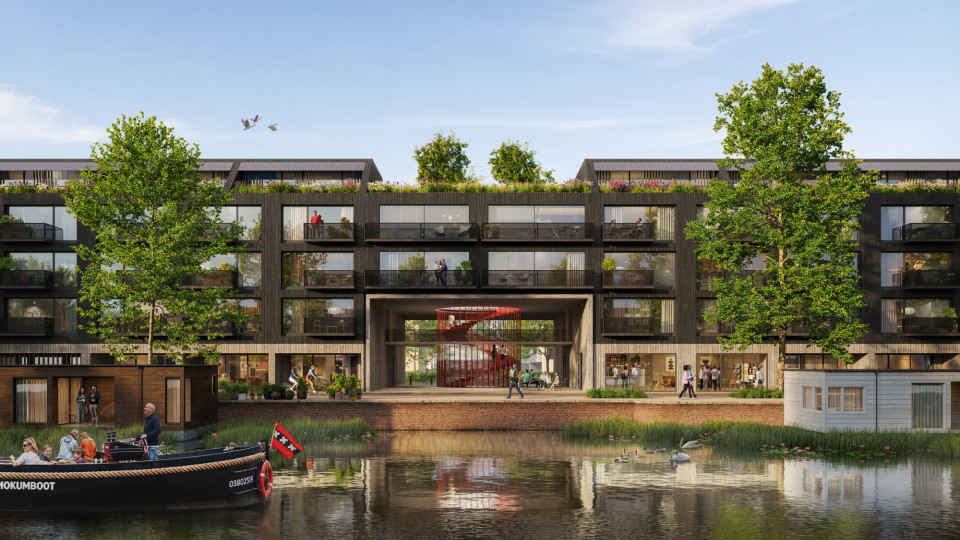At the head of Persoonsstraat in the Feijenoord district, Paul de Ruiter Architects designed a nature-inclusive residential building of brick with an elegant appearance. The new building will consist of 96 dwellings, with green facades and a high-quality hospitality facility on the square.
Lively plinth, recognizable transitions
The building stands out because of its stepped facades. The main entrances of the dwellings situated higher in the block are transparent, visible, and recognizable from the adjacent street. The staircase with the elevators is located centrally in the entrance hall. The upper dwellings are accessed via spacious corridors, wide enough for walkers, baby carriages, and groceries. The hospitality area provides an ideal place for gatherings and meetings between the residents. And the many ground-level homes with front doors on the street reinforce this neighborhood feeling and provide a safe dynamic living environment without closed facades or dark niches.
Mobility as an integral part
The entrances to Dukdalf are high, transparent, and prominent. From the entrance, the residents have direct access to the communal bicycle storage. The storage is comfortable and equipped with electronic access. Cars can be parked in the indoor parking garage, on the ground flour through a ramp, on the second floor.
In addition to the parking facilities for residents, there will be a Mobility Hub. This is directly accessible from the street and offers space for (electric) shared scooters, shared bicycles, and shared cars.
Multifunctional use of facades and roofs
The Feijenoord district is known for its problems with flooding after heavy rainfall. This problem is countered with a number of solutions. For example, a polder roof with solar panels will be installed on the 8th floor. A polder roof with a roof garden will be installed on the 2nd floor and the rest of the roofs will be moss-sedum roofs.
The green facades not only provide a place for flora and fauna. By applying a lot of greenery, the water buffer is also increased and thus the flooding is reduced. The rainwater is collected via a smart roof system, namely a self-regulating water retention roof where water is buffered. Thus, the new building of the city of Rotterdam will soon be nature inclusive and ready for the future.
Project details
Gegevens
| Name and location | Dukdalf - Rotterdam Feyenoord |
| Total floor area | 10,000 m2 |
| Project description | 96 homes, hospitality, parking garage, mobilityhub |
| Start of design | June 2020 |
Ontwerpteam
| Client | Woonstad Rotterdam |
| Project architect | Paul de Ruiter and Martijn van Gameren |
| Project team | Sylvia Hendriks, Richard Buijs, Nico de Waard, Vera Leitão |
| Contractor | Stout Groep |
| Landscape architect | DS landschapsarchitecten |
| constructor | IMd ingenieursbureau |
| Installation advisor | ABT adviseurs |
| Building consultant | ABT adviseurs |
| Other parties involved | Metropolder company |






